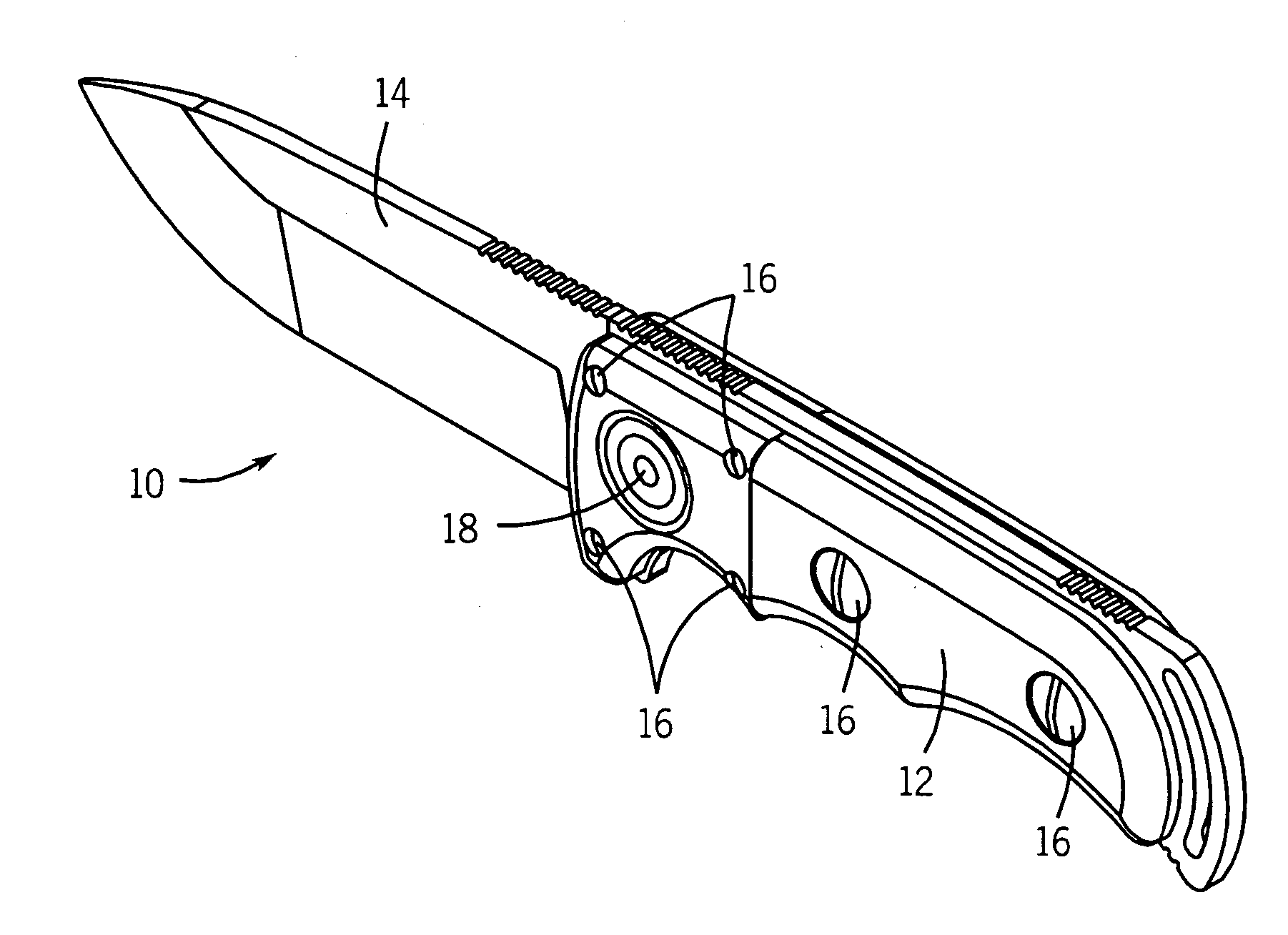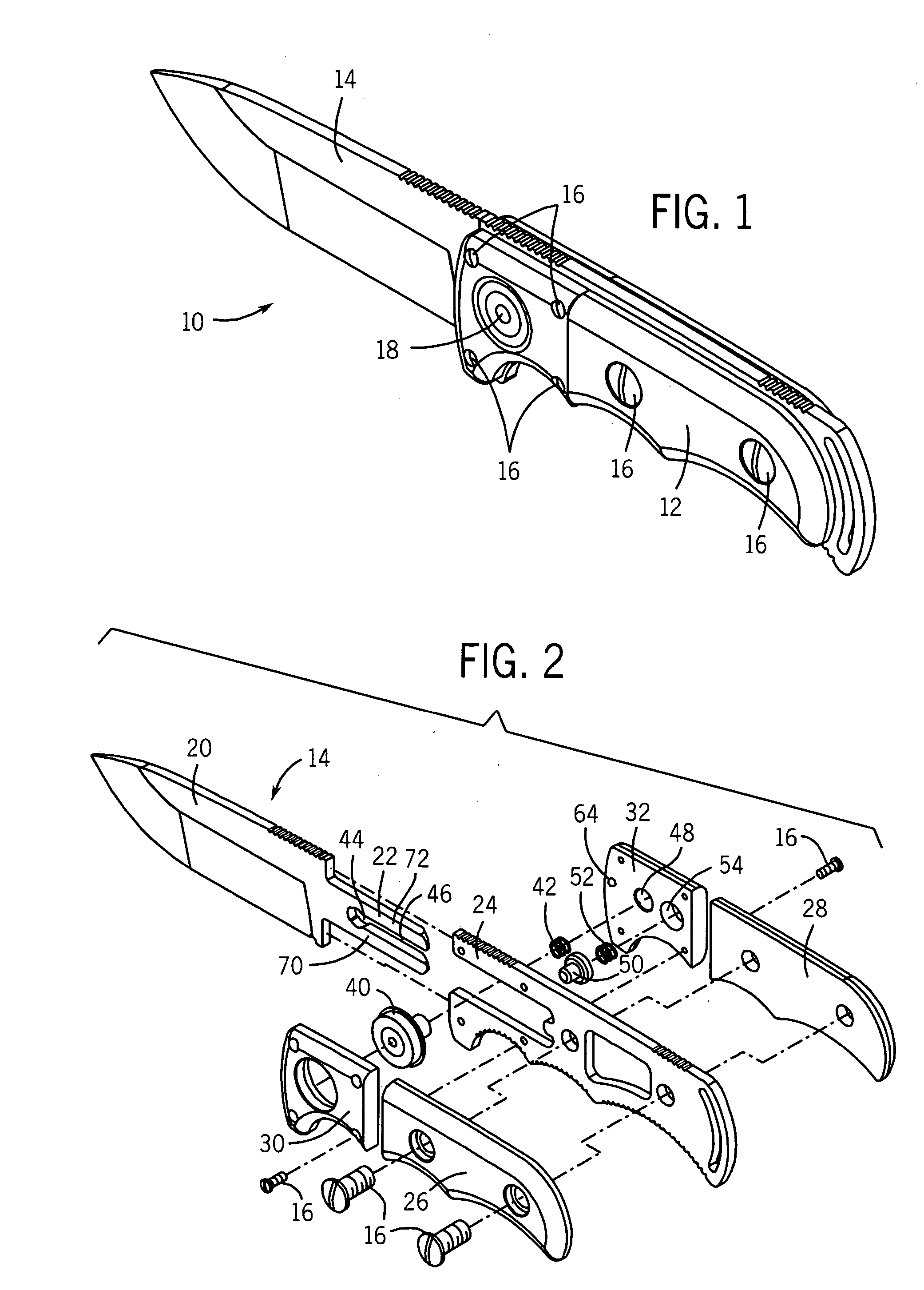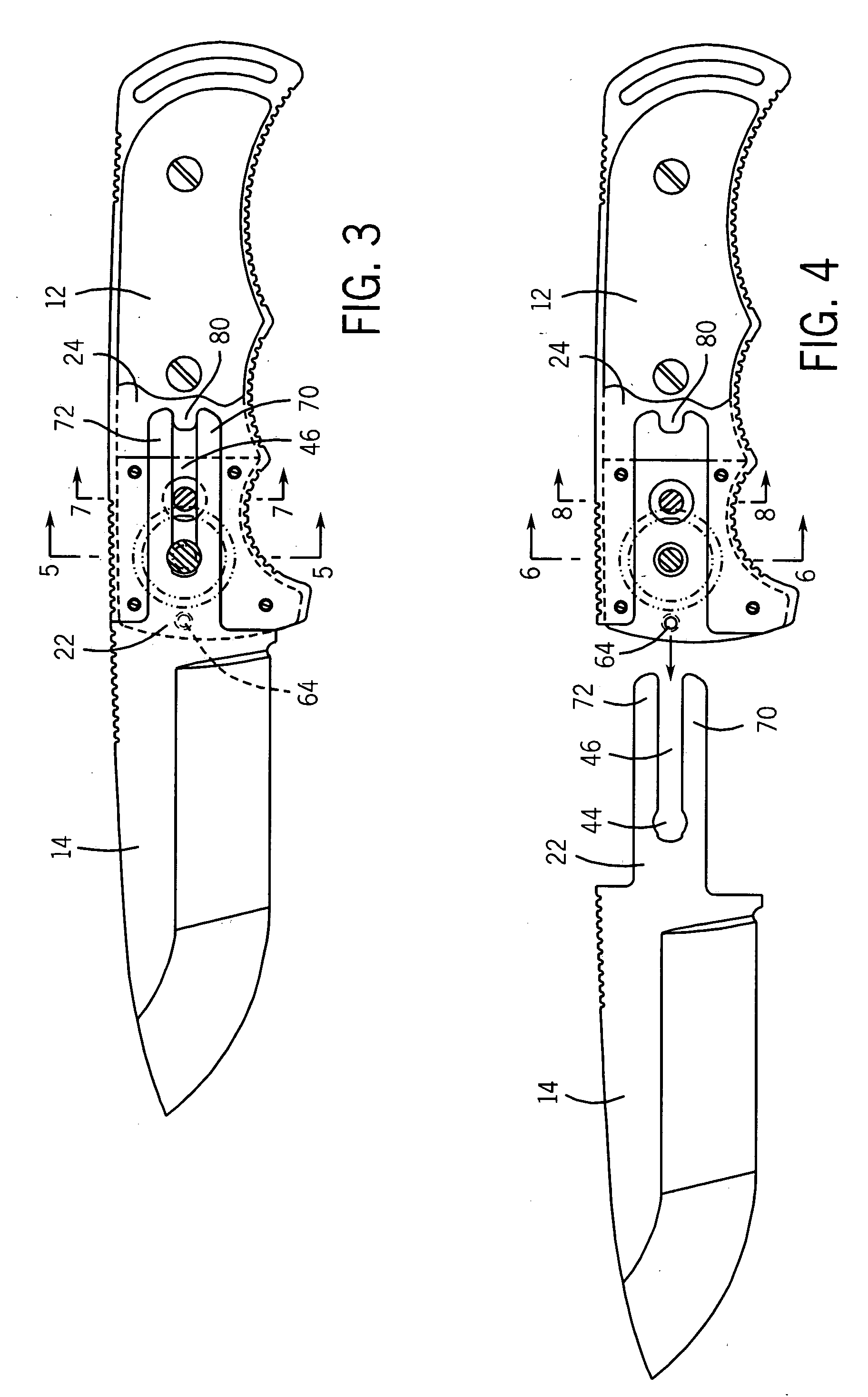Exchangeable blade knife
a blade knife and exchange blade technology, applied in the field of hand-held knives, can solve the problems of increasing the chance of dropping and possibly losing a necessary part of the knife when exchanging blades, and the thickness of the receiving slot in the handle, so as to achieve the effect of reducing the chance of dropping and possibly losing a necessary part of the kni
- Summary
- Abstract
- Description
- Claims
- Application Information
AI Technical Summary
Benefits of technology
Problems solved by technology
Method used
Image
Examples
Embodiment Construction
[0022] Referring to FIG. 1, according to an exemplary embodiment of the present invention, a knife, shown as exchangeable blade knife 10, has a handle 12 and a blade 14. The handle may include various elements or pieces secured together by fasteners 16. In the embodiment depicted in FIG. 1, knife 10 is an exchangeable blade knife having a removable blade 14 that is removed by depressing release mechanism 18. In a typical knife construction, blade 14 is made of metal, such as steel or aluminum, and the handle components may be made of a variety of materials including wood, plastic, metal, or various composites. The term “blade” is not intended to be limiting and may include various types of blades and tools, such as knife blades, saws, skinners, and so forth as is known in the art. Further, the term “handle” is intended to be a generic term referring to all of the components in the handle portion of the knife including various liners, handle sides, bolsters, frames, receivers, and so...
PUM
 Login to View More
Login to View More Abstract
Description
Claims
Application Information
 Login to View More
Login to View More - R&D
- Intellectual Property
- Life Sciences
- Materials
- Tech Scout
- Unparalleled Data Quality
- Higher Quality Content
- 60% Fewer Hallucinations
Browse by: Latest US Patents, China's latest patents, Technical Efficacy Thesaurus, Application Domain, Technology Topic, Popular Technical Reports.
© 2025 PatSnap. All rights reserved.Legal|Privacy policy|Modern Slavery Act Transparency Statement|Sitemap|About US| Contact US: help@patsnap.com



